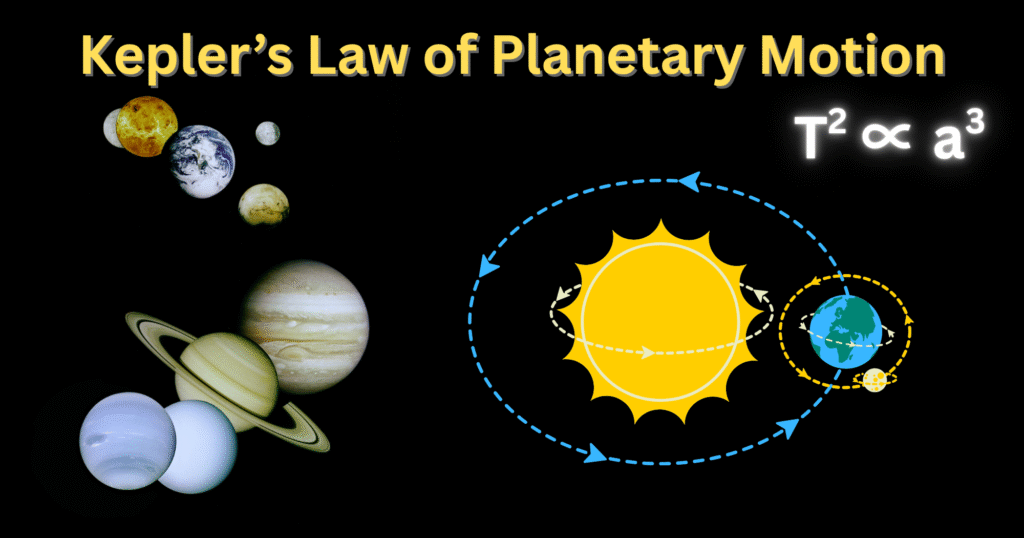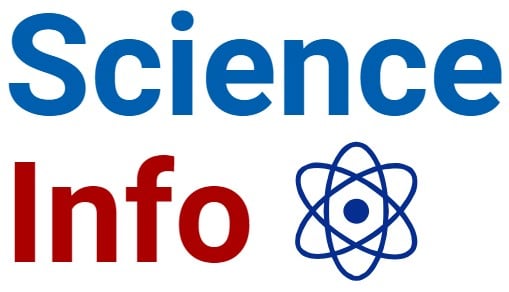Introduction to Kepler’s Laws of Planetary Motion
A basic notion in physics including astrophysics, Kepler’s Law of Planetary Motion render a mathematical framework for comprehending how planets revolve the Sun. These mathematical principles, which Johannes Kepler developed in the early 17th century, enable a remarkable degree of precision and artistry in modeling the rotary motion of celestial entities. Kepler cleared the route for contemporary cosmic dynamics and exploration of outer space by swapping a heliocentric foundation for the geocentric conceptions of earlier ages. The current piece explores Kepler’s three laws’ ongoing relevance in science by going deeply into their composition, background information, and ramifications.

The Historical Context: Johannes Kepler and His Astronomical Discoveries
The contributions of German mathematical genius, astronomer, and astrologer Johannes Kepler (1571–1630) modified what we know of the orbit of the planets. Kepler was born amid the Renaissance, an Epoch of profound conceptual and scientific advancement. Kepler was influenced by the Copernican hypothesis, which proposed that the Sun, not the Earth, was the focal point of the universe. He worked to improve and confirm this ground-breaking theory.
Tycho Brahe, a Danish astronomer notable for his accurate observational data, had Kepler as an assistant to him. Kepler used Brahe’s voluminous data, which he obtained after his demise, to study Mars’ velocity. Contrary to the long-held assumption of ideal circular orbits and consistent velocity, Kepler’s careful investigation resulted in the emergence of three practical rules that precisely portrayed planetary orbits.
Kepler’s First Law: Planetary Orbits as Ellipses
As stated by Kepler’s First Law, widely referred to as the Law of Ellipses, a planet’s trajectory orbiting the Sun resembles an ellipse, with the Sun holding one of the two foci. The traditional idea of circular planetary orbits had been put into doubt by this startling revelation.
- The Nature of Elliptical Orbits
An enclosed curve with two stationary points, known as foci, is termed an ellipse. The overall distance among these two foci and any other spot on the ellipse perpetually remains the same. An ellipse’s eccentricity, which extends from 0 to 1, measures how far it deviates from an exact circle. Planetary orbits are practically circular as their eccentricity frequently remains low.
- Implications of the First Law
Planetary motion was better described by the First Law, which further clarified information that was neglected by circular models. It reinforced the heliocentric term by establishing that the Sun’s effect on planetary motion is not uniform.
Kepler’s Second Law: Equal Areas in Equal Times Explained
The section of line linking a planet and the Sun stretches out equally large regions in a comparable period of time, as per Kepler’s Second Law, often known as the Law of Equivalent Areas. Pursuant to this law, planets travel more slowly when they are distant from the Sun and rapidly when they are in proximity to it.
- Mathematical Explanation
The preservation of angular momentum, an imperative topic in physics, is expressed in the Second Law. The mass, velocity, and distance of the planet from the Sun all impact its angular momentum. A planet’s velocity climbs as it moves closer to the Sun, or perihelion, for the purpose to preserve angular momentum. The rate of motion, on the other hand, declines at the aphelion, which is the most distant point from the Sun.
- Observational Evidence
While perceived from Earth, the motion of the planet seems inconsistent, which can be explained by this law. It also suggests that planets shine brighter at specific points in their paths since they are nearer together.
Kepler’s Third Law: The Relationship Between Orbital Periods and Distances
In line with Kepler’s Third Law, often known as the Law of Harmonies, the square of the duration of a planet’s orbit and the cube of its mean distance from the Sun are connected to each other. It can be stated analytically as:
T2 ∝ a3 [Equation 1]
Where T denotes the orbital period, and a indicates the semi-major axis of the ellipse.
- Significance of the Third Law
A numerical connection between a planet’s movement and its departure from the Sun has been established by the Third Law. The moons that revolve around planets and other astronomical phenomena are likewise subject to this interaction. Astronomers could figure out the corresponding distances of planets from the Sun through assessing the orbital parameters of several planets.
- Applications
By proposing an algebraic relationship among gravitational forces and orbital motion, the Third Law prepared the way for Newton’s law of universal gravitation. In current astronomy, it also makes easier to calculate orbital variables for celestial structures.
Mathematical Derivations of Kepler’s Laws
Subsequent advances in physics presented mathematical clarifications based on Newtonian mechanics; however Kepler derived his principles experimentally. Kepler’s laws can be obtained by applying the laws of motion and gravity:
- First Law: Centered on the inverse-square law of gravity, which states that when influenced by gravity, planetary motion must adhere to curves, such as ellipses, parabolas, or hyperbolas.
- Second Law: The stability of angular momentum in a central force field affords a justification.
- Third Law: The proportionality across orbital periods and distances can be established by equating the gravitational force with the centripetal force required to perform circular motion.
Applications of Kepler’s Laws in Modern Astronomy
In current astronomy and the space program, Kepler’s laws remain as essential resources. They are accustomed to:
- Predict Planetary Positions: These rules are used by astronomers to pinpoint the positions of planets and other celestial entities.
- Design Space Missions: Kepler’s laws have been employed as a foundation for calculating the paths of spacecraft.
- Study Exoplanets: Scientists can deduce the existence and properties of exoplanets by tracking the movement of stars influenced by orbiting planets.
- Satellite Technology: Artificial satellite installation and functioning around Earth and other planets are guided by Kepler’s laws.
Limitations and Extensions: From Kepler to Newtonian Mechanics
Kepler’s laws are not comprehensive, even though they frequently provide a precise account of planetary motion. Kepler’s research was expanded upon by Newton’s law of universal gravitation, which offered an empirical basis for understanding why planets travel in elliptical orbits.
Limitations
- Neglect of Gravitational Interactions:Kepler’s laws disregard interactions among planets and presume that the Sun’s gravity is the sole factor affecting a planet.
- Relativistic Effects:Subjective corrections are required in serious gravitational forces, like those found close to gigantic stars.
- Extensions
- Three-Body Problem: The trivial interactions involving three or more bodies are covered by Newtonian mechanics.
- General Relativity: By explaining events like the precession of Mercury’s orbit, Einstein’s theory improves our comprehension of gravitational impacts.
Visualizing Planetary Motion: Diagrams and Simulations
Visual supports are very helpful for grasping Kepler’s laws. The core concepts are shown using diagrams that show elliptical orbits, different speeds, and the connection among orbital periods and distances. Users may see planetary motion dynamically with modern models and software, showing how various parameters affect orbits.

- Educational Tools
Kepler’s principles are frequently illustrated in the classroom through realistic simulations and animations. By adjusting parameters and observing the consequent changes in orbital habits, these resources help students gain more insight of celestial mechanics.
Kepler’s Legacy: Impact on Space Exploration and Celestial Mechanics
Kepler’s principles are still fundamental to the study of the universe’s mechanics and transformed the study of astronomy. They have an impact on:
- Space Exploration:Keplerian laws govern the route of spacecraft such as the Voyager spacecraft, the Mars rovers, and the interplanetary probes.
- Astrophysics: The cornerstone for comprehending stellar and galactic processes was established by Kepler’s studies.
- Public Understanding of Science: Kepler rendered astronomy more approachable for the public as whole and upcoming researchers by distilling heavenly mechanics into three clear rules.
Conclusion
The strength of observation, rigorous mathematics, and scientific investigation are made clear by Kepler’s Laws of Planetary Motion. Kepler redefined our knowledge of the cosmos by revealing the elliptical structure of planetary orbits and their connection to time and space. His contributions established the stage for Newtonian mechanics and contemporary astronomy in addition to validating the Copernican paradigm. Kepler’s lasting contribution to science is confirmed by the fact that his ideas still motivate and direct cosmic expeditions today.
References
Russell, J. L. (1964). Kepler’s laws of planetary motion: 1609–1666. The British journal for the history of science, 2(1), 1-24.
Katsikadelis, J. T. (2018). Derivation of Newton’s law of motion from Kepler’s laws of planetary motion. Archive of Applied Mechanics, 88(1), 27-38.
Osserman, R. (2001). Kepler’s Laws, Newton’s Laws, and the Search for New Planets. The American Mathematical Monthly, 108(9), 813-820.
https://byjus.com/jee/kepler’s-laws/
https://www.britannica.com/science/Keplers-laws-of-planetary-motion
